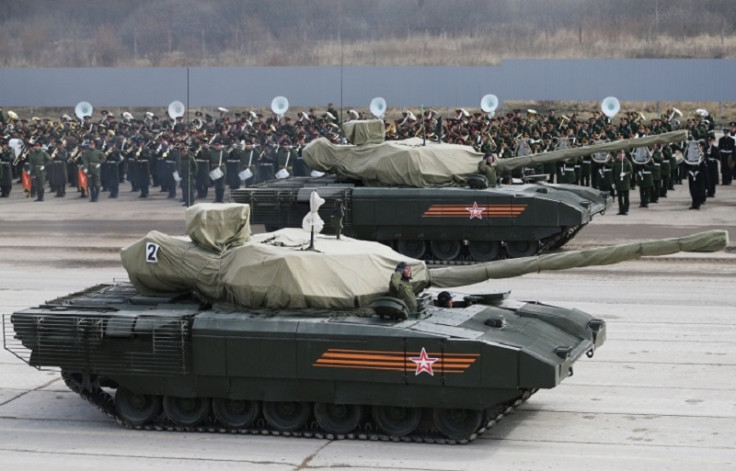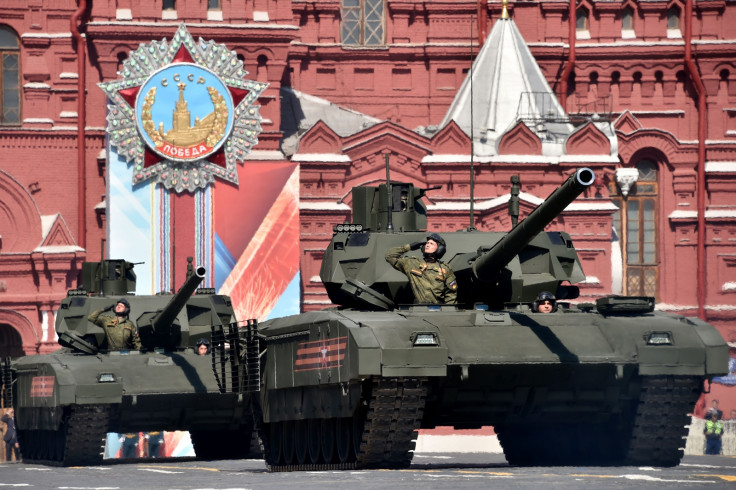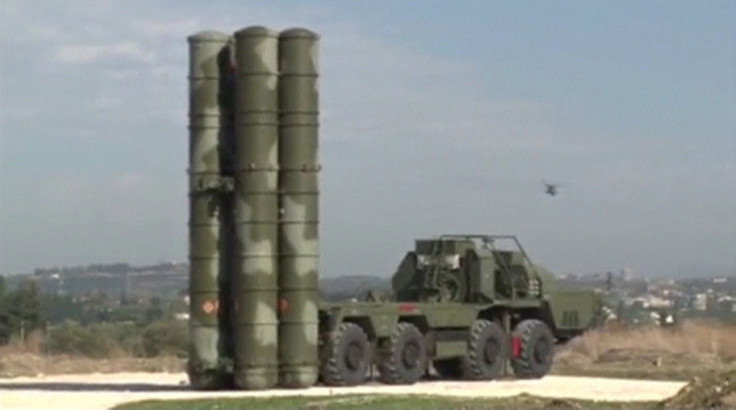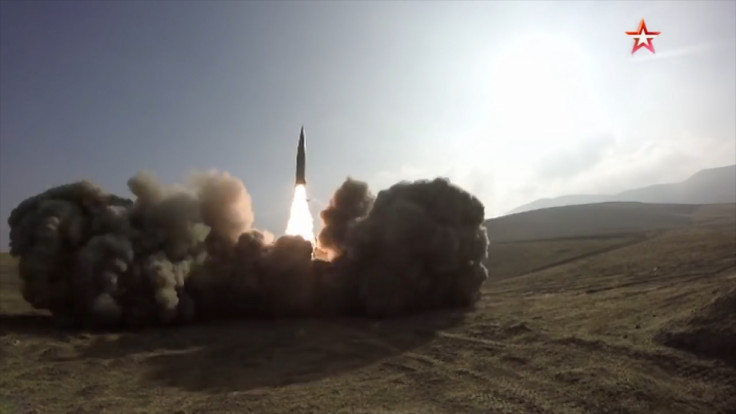Russian military tech 2017: Biggest weaponry reveals and announcements from the Kremlin this year
2017 has turned out to be the year of autonomous weapons.

The Russian war machine saw some major upgrades and new developments this year. While the focus was clearly on automation and artificial intelligence (AI)-based weaponry, Russia has unveiled everything from automated missiles to drones and even a robot that can drive and operate guns with tremendous accuracy.
Here are our picks of Russia's most frightening and destructive weapons of war unveiled this year. While this list is not exhaustive, and is in no way complete, we think the machinery mentioned here is worth looking back on and following up in the coming year.
AI cruise missile
With an aim to build a cruise missile that can think, steer, select and destroy targets by itself, news emerged that Russia is working on a truly autonomous missile system. Boris Obnosov, CEO of Tactical Missiles Corporation, said that even though much more research is required in order to achieve specific results, certain aspects of this tech are already available.
He even referred to the Americans who now have a cruise missile that can be redirected to a different target after launching. This could be in reference to the Tomahawk Block IV cruise missile which can circle a region for hours and change direction almost instantaneously. This missile can even send pictures of its targets back to the launch site before striking that target. The Russians, however, seem to want to take this tech to the next level. It is not clear at this time as to when the Kremlin will unveil these missile systems.

Nerekhta – the ground drone that is better than human-driven tanks
Nerekhta is an unmanned ground vehicle (UGV) that the Russians say has performed better than its manned counterparts. While it is not clear on which tests it performed better, or which versions of the Nerekhta were used, what can be said for certain is that this drone is really good at targeting and shooting.
A spokesperson from the department of innovation research at the Main Directorate of Research Activities, a unit within Russia's ministry of defence, has said that the robot now performs reconnaissance, demining and firefighting roles, but will be considered for shock assault in the future as well. Nerekhta can be outfitted with a Kalashnikov tank machine gun or a 12.7mm Kord machine gun, as well as an AG-30M grenade launcher, according to reports. The country's ministry of defence will reportedly study a few more ground vehicles before making their final decision on the tank.
Electric tiltrotor helicopter
Russia wants to build its own tiltrotor helicopters, but with a number of upgrades in mind. Engineers are now working on a heavy-lift tiltrotor helicopter that is completely electric. Russian Helicopters, a part of Rostec State Corporation, has already started work on this rather ambitious project.
Tiltrotor aircrafts have the advantages of both airplanes and helicopters in that they can land and take off vertically and cover large distances fast. That is one of the reasons why the US military's Osprey is well-loved and used so often in the field.
The aircraft is expected to be unveiled in 2019, and its fully-electric nature will make it incredibly silent with minimal thermal signature.
Armata tank – Autonomous turret, super capacitors, magnetic controls, and more
Russia has a long tradition of building spectacular military tanks, and the most recent Armata tank is one which has been hailed as "the most revolutionary tank in a generation". The vehicle will have, apart from a lot of defining features, the first "fully automated, digitised, unmanned turret" in a tank.
The tank is apparently so well built, the State sponsored propaganda machine – Sputnik – famously declared that it is good enough to even run on Mars. Made by Renova, the Armata can reportedly make cold starts in temperatures as low as -58 degrees Fahrenheit since it uses super capacitors in place of batteries. The tank will also sport a magnetic turret instead of a hydraulic one since the latter is more prone to damage and malfunctions.

Mig-41 fighter – Drone mode, hypersonic speeds, and the edge of space
The Mig-41 will replace the ageing Mig-31 fighter and is expected to arrive in the mid-2020s. While it is expected that the incoming Mig-41 will be an ultra-modern jet, the list of things that the aircraft might be capable of doing, according to its makers, is astonishing.
According to a report about the aircraft which was published by RIA Novosti (RN), the 41 will have the ability to even launch small satellites into space. At those altitudes, the jet will reach speeds of over Mach 3.5 (3.5 times the speed of sound), the report claimed.
This fighter will be utilised by the Russian military as an interceptor, which is a class of aircraft whose main function is to find and destroy ballistic missiles, noted RN.
Yermak missile defence system – to detect and attack targets up to 120km away by itself
Missile defence systems are a big part of the Russian war machine and the Yermak is one of their most ambitious yet. It is a fully automated, AI-powered, anti-aircraft weapon that can interact and work in tandem with other missile defence systems within a network. It was unveiled this year at the Russian Army Expo.
Weapons maker Tikhomirov Research Institute of Instrument-Making, the developers of this system, said that it will be ready for the field in the 2030s.

Invisibility cloak – hiding soldiers from enemy radars
Russia is working on an invisibility cloak to keep their soldiers from being detected by enemy forces. This cloak is being developed only to hide soldiers from radars and other radio-based detectors. While not making wearers visually invisible, this cloak will increase their stealth.
At this time, it is not clear if such cloaking uniforms will be given to all soldiers or only a select few elite snipers and other such specialised units in the Russian military. The report also mentions how light-sensitive cells can trigger the top layer of clothing to imitate its background, offering better cover for soldiers.

Iskander M – the nuclear-tipped, short-range ballistic missile that is legal
The Iskander M is Russia's answer to the American LRPF. Both of these missiles are well within the 'allowed' range under the 1987 Intermediate Nuclear Forces Treaty.
The Iskander M can fly at hypersonic speeds, carry multiple nuclear warheads, and works like a ballistic missile – it flies to outer space and then comes screaming down towards its target at high speeds. Apart from nuclear weapons, this missile can also deliver high explosive warheads, as per a report in Popular Mechanics (PM).

Kalashnikov's catalogue this year – bikes, cars, drones and trucks
Russia's largest weapons manufacturer was also busy at work this year. While they are yet to launch their autonomous guns and sentry systems, they did introduce quite a few products.
The imaginatively named Shchit is a riot control truck that is intimidating and imposing, and is built to quash civil unrest, which the Kremlin is reportedly expecting soon, according to the Associated Press (AP).
An electric dirt bike was also unveiled this year. The company claims that the bike can be used to patrol cities and ecologically sensitive areas.
The Kalashnikov-branded "flying car" is another innovation that turned heads this year. It was demonstrated in a video which shows a pilot flying around a hangar in a metal-like frame. It has eight pairs of rotors and is completely battery-powered.
Also, Kalashnikov has started to build drones.

Apart from these weapons and weapons systems developed by the Russians this year, the Russian military also fanned a lot of unverified propaganda, including publishing claims that the US was somehow able to move through Isis territory without any resistance, thus implying that American troops might be working together with terrorists.
Also, the Russian army banned selfies this year and dropped the largest non-nuclear father of all bombs on Isis.





